Materials Sciences and Applications
Vol.3 No.2(2012), Article ID:17260,4 pages DOI:10.4236/msa.2012.32018
The Methodological Way to Diagnostic of Efficiency Active Leaching Materials
![]()
1The Company Modern Technologies, Krasnodar, Russia; 2Department of Natural, Maikop State University, Maikop, Russia; 3Department of Common and Inorganic Chemistry and High Technology, Kuban State University, Krasnodar, Russia.
Email: bukov@chem.kubsu.ru
Received September 28th, 2011; revised December 8th, 2011; accepted December 17th, 2011
Keywords: Barrier Diffusion Moderator; Release Rate; Antifouling; Diagnostic of Efficiency
ABSTRACT
It was demonstrated possibility of express diagnostic of characters and prediction efficiency of leaching materials on the bases comparison release rate of active substance and accelerated field tests. It makes on the example of study diffuse layer of the composite of barrier type with active compound.
1. Introduction
Active leaching materials for protect buildings and constructions from biodegradation and biofouling constantly improving. Such application covers different spheres ecotechnologic safety. Development of such materials closely related with studying of mass transfer’s processes. Basically the way of development is consequent to the working off of such steps as: the determining of effect of the active compound on the suppressing process; the determining of the effective doses; experimental selection of suitable diffusive matrix [1-3]. Such research scheme allows consistent results. Although it is expensive and long process.
In our previous work [4-6] was demonstrated the influence the filler of barrier-type (basalt scales) on diffusion properties of polymer binder. The release rate diffusion to liquid phase decreases by exponent in a result of shielding of the contacting surface of polymer binder with active substance by basalt microplates of basalt. Suchwise basalt scales included in the consistence of composite, from one side, it is an anticorrosive component, from other side, it is a barrier moderator of diffusion.
Objective of present work (on example of studying of perspective antifouling composite) is to demonstrate the possibility of using in another way that was described before. This is physico-chemical approach to diagnostic of properties active leaching materials, which includes express analysis of efficiency investigating materials and to predict it is properties by using received critical release rating.
2. Experimental Part
For receipt of the studied composition as an active compound, we used the herbicide class s-triazines-cyproconazole isolated from the “Alto Super” preparate in which it is the active substance. The choice of this compound was due to the similarity of its structure used biocides, low ecotoxicity and the ability to degradation in aqueous solution [7,8]. Before the introduction of the solid matrix, the purity and identity was verified using gas chromatography-mass spectrometry.
Class of reagents and solvents for the determination of concentrations in solutions of cyproconazole and the modeling natural sea conditions were not lower than analytical grade.
2.1. Preparation of Compositions
Epoxy-basaltic and epoxy compositions were prepared according to [5] the introduction of 0.1% (by weight) cyproconazole. The contents of basaltic composition at scales of 40% (by weight), as demonstrated previously [4-6] gives the optimal barrier effect.
2.2. Static Diffusion Experiments
In [9] it was demonstrated that the results obtained by studying the effect of composition on the release of the active compound using the technique of static experiment were the most reliable.
Plates of coating were immersed in aerated aqueous solution of 200 cm3. In previous experiments, it was established that the biocide is stable in solution for a week and its concentration is far from being saturated. So every week, the solution is renewed, and the old solution is analyzed for determination concentration of the active compound.
Aqueous solution: pH 8 ± 0.4, salinity 1.8% ± 0.1%, the temperature is repeating at natural marine conditions of samples exposure.
The area of the surface of the sample contacting with the solution has of 240 cm2, a double thickness of coatings placed relative to the sea (the Black Sea, Gelendzhik).
To determine cyproconazole, GC/MC method (instrument Shimadzu 2010) is used, analysis was carried out after its extraction from aqueous solution. The solvent used is chloroform. The determination of this compound was performed by the method described in [10] with used tuned MC detection.
Calculating of the release rate was carried out as follows:
 (1)
(1)
where v(t) the release rate of biocide ng/sm2 per day d, m mass of released active compound, ng, 240 the area of the surface contacting with the solution, cm2, 7 the time accumulation of the active compound in the solution, day.
2.3. Study of Fouling of the Samples
The test samples (studied coating on a steel plate an area of 100 cm2), three specimens of the coating containing the active compound and the control exposure (epoxy-basaltic composition without biocide) were placed in the sea on the equipped booth on the stationary pier (Gelendzhik, Black Sea). Immersion depth of the cassette is about 1.5 m.
The observations method of fouling included visual observation and photographic fixation data. Evaluation of test results were conducted on the following criteria, as reflected in documentation regulating of the test:
Ÿ Control of fouling and the physical condition of the surface (peeling, cracking, swelling);
Ÿ The time during which the coating loses its protective properties;
Ÿ Area (overgrown and ruined) the sample surface;
Ÿ Comparison of the fouling and the release of biocide.
3. Results and Discussion
The nature of the native fouling on the studied composite without introducing into it the active compound is demonstrated in Figure 1. According to the mechanism of the native fouling [1] and the data phase of settlement and colonization of marine fouling, samples are during the first week of exposure and later during the stage of growth, are characterized by the exponential increase of biomass on the surface.
For samples of the active composite with introduced barrier moderator, the stage of growth relative to control occurs later, with a 2 weeks’ time shift (Figure 2). The shift in time of active fouling coatings attests to the influence of introduced additives antifouling into it. Proceeding from these field data on fouling and its mechanism, the lifetime for a composite with barrier moderator was 3 weeks.
For the leaching of materials, regardless of the mechanism of leaching, their effectiveness is determined, ultimately, of the masstransfer from the surface of the material. Thus, the defining characteristic of the coating it is the release rate of the diffusing active substance per unit surface, and its threshold is the critical rate (i.e., the release rate at which the coating loses its effectiveness) [2].
The value obtained by of the release rate of the active compound from the polymer matrix with a barrier moderator at the end of the effective action (third week) is 0.6
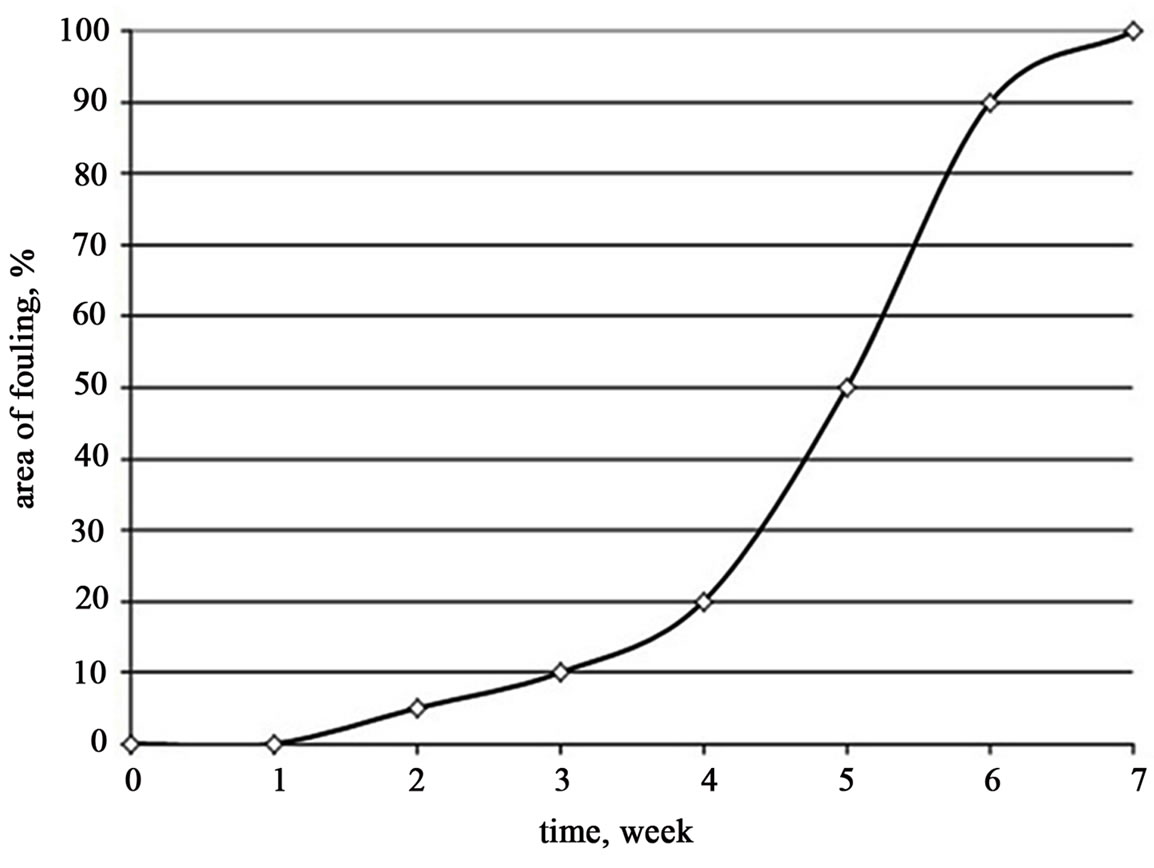
Figure 1. Fouling of control samples in marine nature.
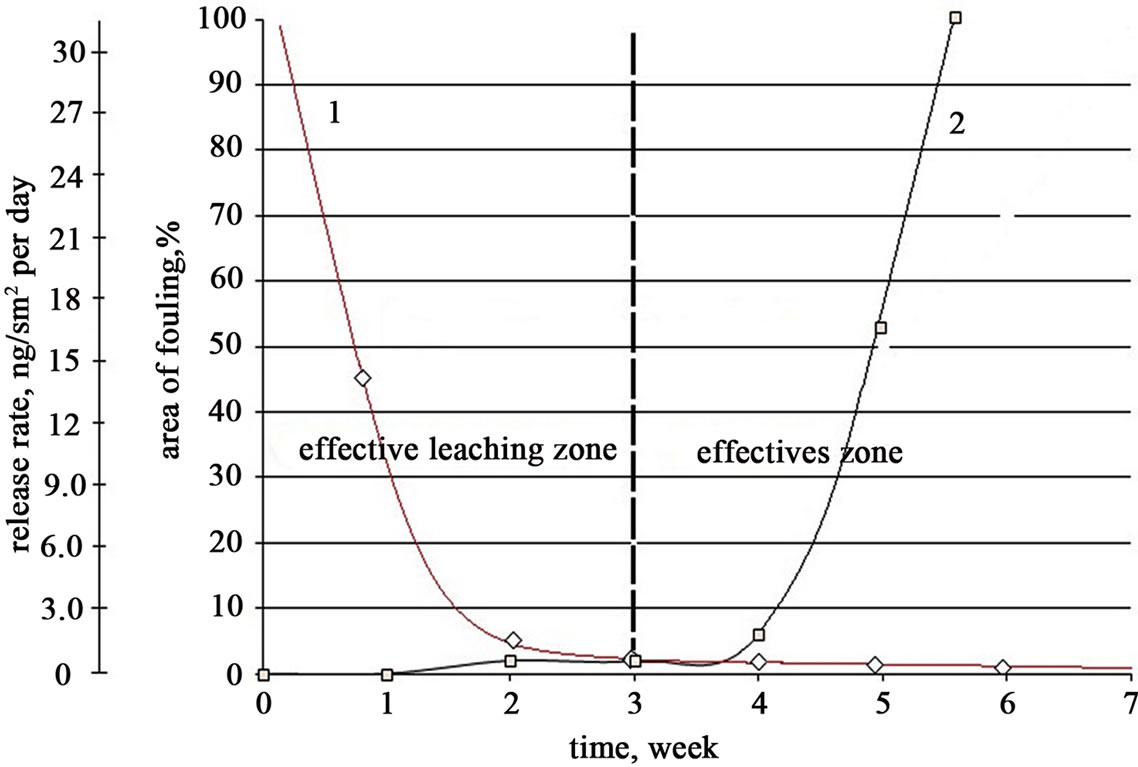
Figure 2. Test of composite samples with barrier diffusion moderator: 1 curve of active compound release; 2 curve of fouling.
ng/cm2 per day. As seen in Figure 3, the release rate of the active compound from the polymer matrix containing no barrier moderator is higher than this value and for the summer-autumn period of 2010 exposure in conditions of natural sea the growth of fouling is not detected, confirming the effectiveness of the studied leaching of the composite in the fight against marine fouling (Figure 4).
Since the causation “release-antifouling effect” is set and the critical rate of release is determined, on the basis of data on the dynamics of the release of the active compound, a prediction of a lifetime of the coating can be given. A а leaching of reserve of the active compound and the time (in the slow downward curve of the release) for obtain threshold critical rate can be extrapolated. Extrapolation is reliable in the case when it calculates on the data of a stable phase of release (Figure 3) [3].
In this case, a slowly falling rate of release of active compound for a reliable extrapolation, the equation applicable to the linearized form has the following form [3]:
 (2)
(2)
where v(t)—the release rate, t exposure time.
Extrapolation of a release towards the critical speed of the active compound of the diffuse layer on the above mathematical model gives the value of the lifetime of the composite equal to 2.3 years ± 0.5 years.
Ability to express reliable prognosis with similar functions (the dependence of the Weibull) was studied in an extensive paper [3]. A comparison of the dynamics of leaching and exposure of several contact-type coatings in different environmental conditions showed that a reliable prediction of the lifetime of the composite is possible by analyzing 10% of the release curve (under the stable release).
Based on these data, in our case the twelve week period of observation for the release is enough to validate the forecast.
Summing up the studying stages of the properties of the following composition materials we can propose a diagnostical scheme of the efficiency active leaching composite materials (Figure 5).
Some enrichment polymer matrix of the composite (with the introduction of a barrier moderator) by the active compound, leads to the fact that the initial rate of release of the active compound is higher than the equivalent for the diffusion of the matrix without a moderator. Subsequently, influence on the dynamics of the release of the shielding surface, it decreases the release rate of the active compound. Thus for a short period of time it can be modeled a wide range of release of the active compound. In conjunction with the data field tests the causation “release effect” and its quantitative parameters can be quickly installed. In the subsequent, based on a study of
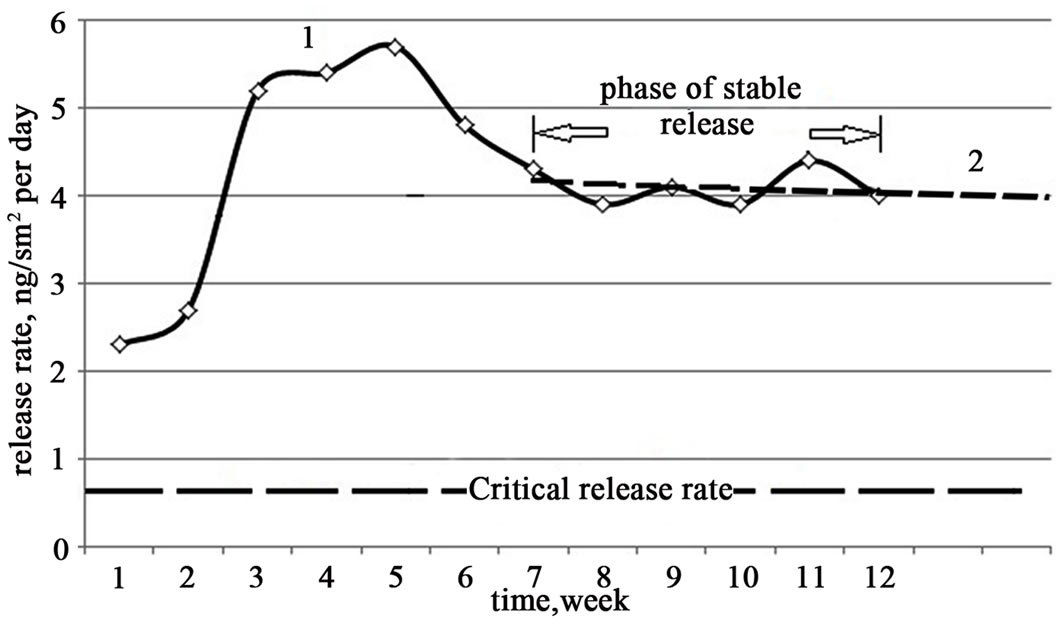
Figure 3. Release of active compound from composite samples without barrier diffusion moderator: 1 curve of release; 2 predictive curve of release.
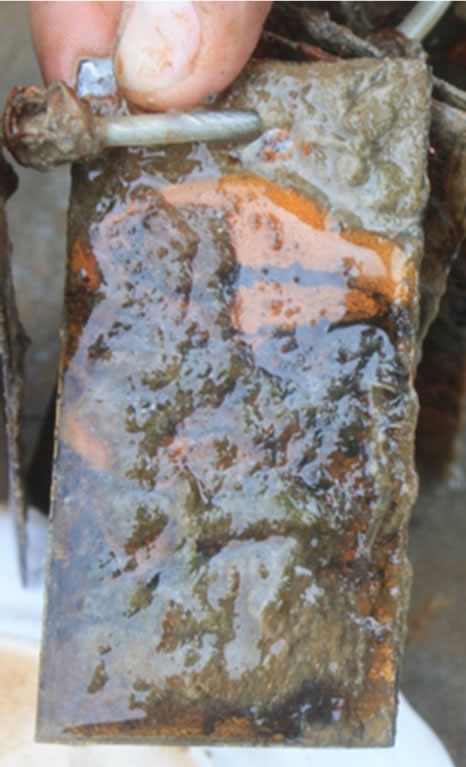 (a)
(a) (b)
(b)
Figure 4. Composite samples after exposure (May-October 2010): (a) Control sample; (b) Sample of composite with active compound (without barrier moderator).
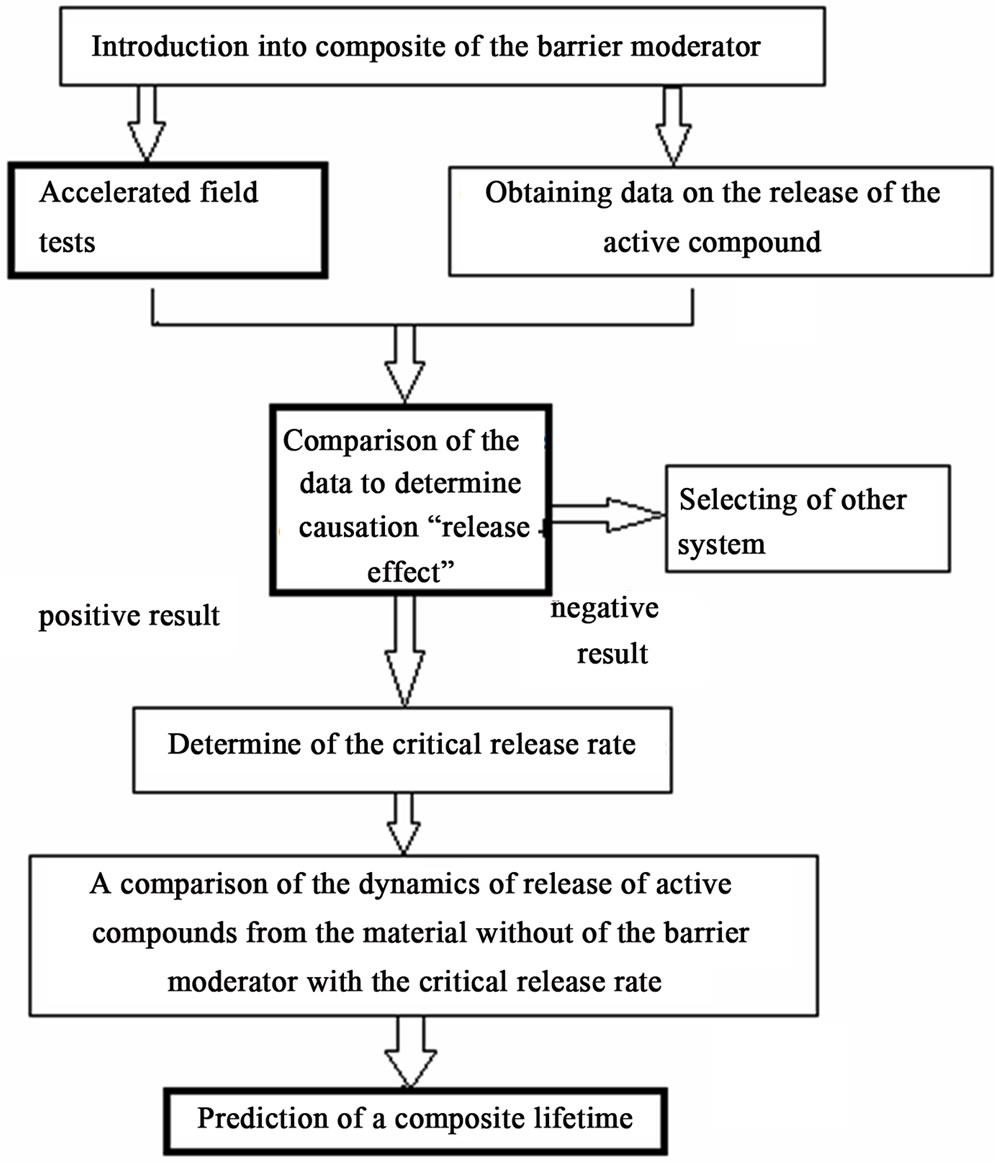
Figure 5. The scheme of diagnostic effectiveness of the active leaching materials.
the masstransfer from diffuse matrix, prediction of composite lifetime can be done or to correct of the reserve of the active compound in the composite to obtain the desired lifetime of the developed material.
The largest experimental variations are possible in the stage of the introduction barrier moderator in a composite.
In our case, when introduced into the composite 40% basalt scale reached the required flatness of the curve of the release. Although depending on the type of filler, such as the moderator and its contents flatness release may vary [6].
Comparison of the “effect-property” is held with respect to the fundamental axis of time.
4. Conclusion
The acceleration of field tests stage due to the exponential decrease in the rate of release of the active compound, is obtained as a result of the introduction of the barrier diffusion moderator and a combination of diagnostics of efficiency with the phase of definition, needed activity, makes the proposed scheme useful in terms of time and cost to analyze the properties of the developed material.
5. Acknowledgements
Thank to the “Russian Foundation of Fundamental Investigation” for financial support of this work (grant number 11-03-96 507-r-south-c).
REFERENCES
- L. D. Chambers, K. R. Stokes and F. C. Wals, “Modern Approaches to Marine Antifouling Coatings,” Surface & Coatings Technology, Vol. 201, No. 6, 2006, pp. 3642- 3652. doi:10.1016/j.surfcoat.2006.08.129
- D. M. Yebra, S. Kiil and K. Dam-Johansen, “Antifouling Technology—Past, Present and Future Steps towards Efficient and Environmentally Friendly Antifouling Coatings,” Progress in Organic Coatings, Vol. 50, No. 2, 2004, pp. 75-104. doi:10.1016/j.porgcoat.2003.06.001
- V. A. Karpov, J. L. Kovalchuck, O. P. Poltarukha and I. N. Ilyin, “An Integrated Approach to Protection of Marine Fouling and Corrosion,” Partnership of Scientific Knowledge KMK, Moscow, 2007.
- N. N. Bukov, R. V. Gorokhov, A. S. Levashov, E. J. Se, N. A. Shkabara, V. V. Revenko and V. T. Panyushkin, “New Anti-Corrosion Coating of Barrier Type on the Basis of Basalt Scales,” Ecology and Industry of Russia, No. 1, 2009, pp. 32-33.
- N. N. Bukov, R. V. Gorokhov, A. S. Levashov and E. J. Mnatsakanova, “The Polymer Composition for a Protective Anti-Corrosive Coating of Barrier Type,” Patent Russia RU 2394058 C2, MPK С09D 163/02, C09D5/08, 2010.
- N. N. Petrov, R. V. Gorokhov, N. A. Shkabara, A. S. Levashov, T. N. Musorina, T. B. Kasatkina and N. N. Bukov, “The Study of Shielding Effect of Basalt Scales to Create a Matrix with Controlled Diffusion of Biocides,” Spectroscopy of Coordination Compounds. VII International Conference, Abstracts, Tuapse, 3-9 September 2010, p. 136.
- N. Voulvoulis, M. D. Scrimshaw and J. N. Lester, “Alternative Antifouling Biocides,” Applied Organometallic Chemistry, Vol. 13, No. 3, 1999, pp. 135-143.
- I. Omae, “General Aspects of Tin-Free Antifouling Paints,” Chemical Reviews, Vol. 103, 2003, pp. 3431- 3448.
- M. Thouvenina, J.-J. Perona, C. Charreteurb, P. Guerinc, J.-Y. Langloisd and K. Vallee-Rehel, “A Study of the Biocide Release from Antifouling Paints,” Progress in Organic Coatings, Vol. 44, No. 2, 2002, pp. 75-83.
- B. Buttler, “Gas Chromatographic Determination of Propiconazole and Etaconazole in Plant Material, Soil, and Water,” Journal of Agricultural and Food Chemistry, Vol. 31, No. 4, 1983, pp. 782-785.

